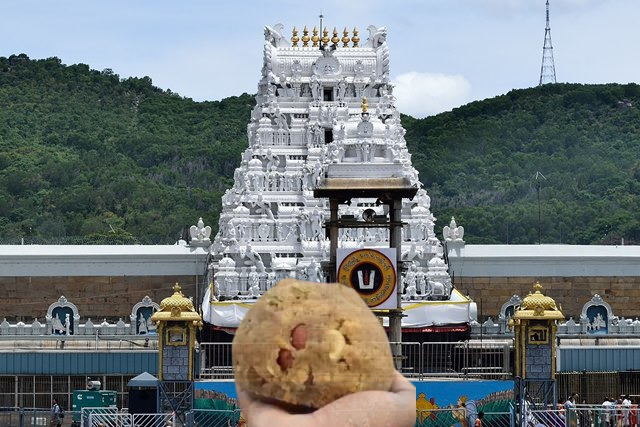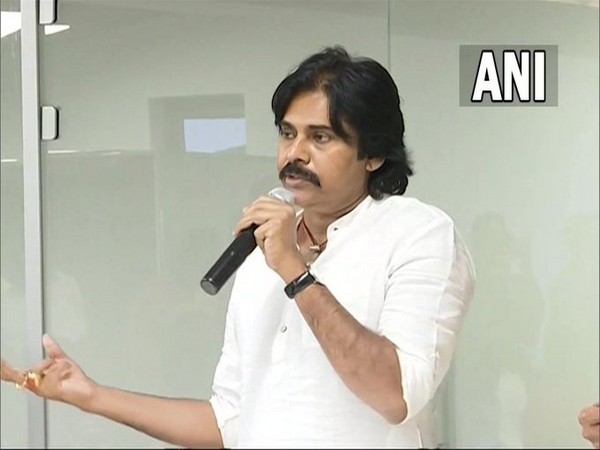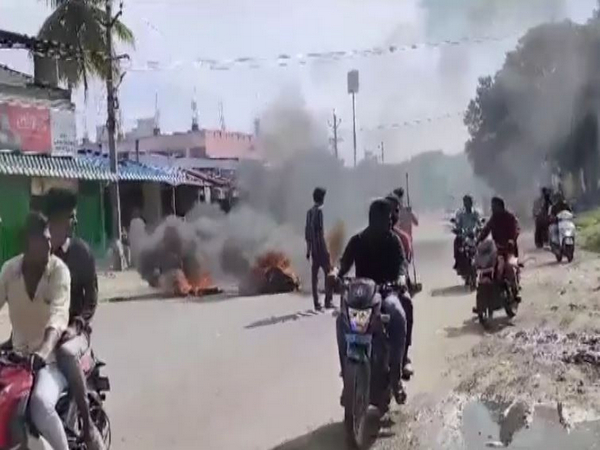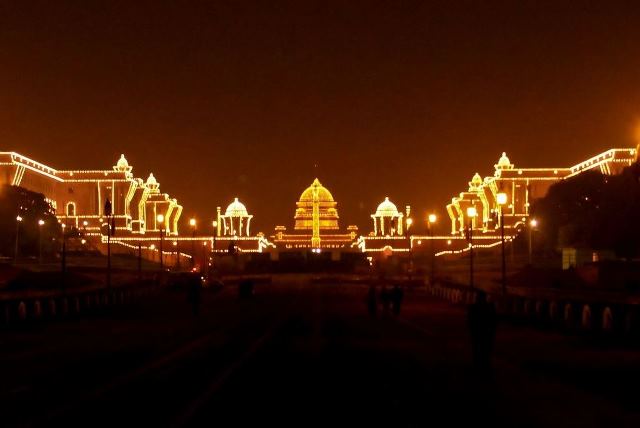Never firmly held inside, the genie of religion has escaped the proverbial bottle in tradition-bound India. The political slugfest over the ‘purity’ of laddu offered to the deity at the Tirumala Tirupati shrine in Andhra Pradesh and then to millions of devotees, even online across the globe, has raised a spectre that all concerned ought to have avoided.
Confining the debate to the Hindus – 15 billion and 14.27 per cent of the global population – no prayer or ceremony is complete without prasaad. Partaking it individually, as a family or member of a community is the outward expression of piety. The controversy over ‘contaminated’ laddus has created doubts and anguish in the minds of millions. Devotees continue to throng the shrine and place orders, reports say. But doubts shall linger till the controversy is resolved, which seems some distance away.
The ghee (clarified butter) used for making laddu is allegedly mixed with lard, fish oil, pork fat, beef fat and other cheaply available ingredients, according to Andhra Pradesh Chief Minister N Chandrababu Naidu who blames his predecessor, Y S Jaganmohan Reddy’s rule. He had the samples tested in various labs and rushed to the media, apparently without realising the damage he was causing to the shrine that has disbursed it for over two centuries. ‘Tirumala Laddu’, which received the geographical identification (GI) tag in 2009, has been popular among devotees for well over a century.
It is universally acknowledged that politics, especially electoral politics, has seized Naidu, back in power after two decades and determined to stay, to demolish his arch-rival and predecessor. That he blames the latter’s rule, as if everything was fine before and is fine now, betrays his intent.
The Supreme Court told him on September 30: “When you (the Chief Minister) hold a Constitutional post… we expect Gods to be kept away from politics. If you had already ordered (an) investigation, what was the need to go to the press? The lab report came in July… your statement came in September. (And) the report is not at all clear…”
The court battle has only begun. Was the apex court late in pronouncing that “religion and politics cannot be allowed to mix”? The sordid episode shows that India is paying the price for mixing religion with public life, especially politics, even as its economy surges and its leaders strive for a place at the global table. Sadly, it starts with those holding the highest offices. Their lending legitimacy has given piety colours that are supremacist and betray ‘otherness’.
Who started this mixing, when and why, is a debate that began earlier and will persist even after the one over laddu is resolved with the help, as it increasingly happens on numerous issues, from the highest court in the land. The practice of faith, any faith, although an individual choice, is no longer free from the scrutiny of the guardians of law, of faith, community and the vigilante some political parties spawn. As people, to use Indianism, we are like that only!
That Naidu should have done this and earned a reprimand from the apex court is unsurprising in India’s current political and social ethos. But it is painful to see the regression of a man who was once the posterboy of India’s IT revolution. During his earlier stint in power, he midwifed “Cyberabad” city and was rightly hailed as a visionary wedded to modernity. He cemented that reputation with a capital city for his now-truncated state. He must take the blame and more, since he is a key partner in the alliance ruling the country.
ALSO READ: Keep Gods Away From Politics, Says SC
For, he has shown the way to others, incredibly, to the majority of Hindus, making his allies in New Delhi uncomfortable. Demands have risen in many shrines across the country that the government should cede control of religious shrines. It is mind-boggling to think of the management, well-being – and now the cooking and distribution of prasaad – at an estimated 650,000 larger temples, as per a 2022 count. The demand is misplaced.
Though unfortunate, unsurprising again, is the flurry of twists and turns the laddu is being subjected to. Jaganmohan, like many Reddy families, is a Christian. It did not matter earlier. But now he says, and Naidu denies, that the police blocked his entry.
It has touched filmdom. Actor Prakash Raj, a secularist, appeals to Naidu against playing with public sentiments. Actor-minister Pawan Kalyan demands that Raj should talk of the “atrocities on Hindus in Bangladesh.” Kalyan goes a step further seeking a national-level vigilante force, Sanatana Dharma Rakshana Board.
One may argue that the shrine, the world’s richest with an annual revenue of ₹5,200 crores, needs to be better managed. Andhra Pradesh’s ruling class has made its management body, Tirupati Tirumala Devasthanam (TTD) its battleground. From corporate czars to judges to academics and politicos – all want to be on it. That the board is reconstituted every five years when the incumbent government is ousted, demonstrates the significance of its predominance for a government. But so are other shrines where public funds and faith, both, are the key. As they deal in billions, corruption charges routinely fly around as one set of management replaces the other. Their upkeep, security and crowd management (deaths of devotees due to stampedes) also need constant checks.
As for the prasaad many shrines distribute (there have been cases of food poisoning) adulteration is a common offender. Tirupati has brought out the aspect of ghee. Around 3 lakh laddus are made daily in the temple kitchen using about 15,000 kg of ghee. Several litres of cow milk (four per cent fat content) priced at ₹70 per litre are needed. Matching use of sugar/jaggery is also needed. The use of dry fruits and saffron, expensive again, some devotees complain, has reduced over the years.
The charges of adulteration stem from these huge and expensive daily needs. Citizens, worried at the laddu issue escalating, want it to be confined to adulteration. But then, Indian manufacturers/traders are notorious – difficult to say more or less than their counterparts elsewhere.
All consumables are subjected to adulteration – from asafoetida to zeera (cumin). Petroleum wax in white butter, paraffin wax in chocolates, mineral oil in sweets and much more, you are told, are added to ensure their longer shelf life. Left unsaid is: leave the length of your own life to the almighty!
For more details visit us: https://lokmarg.com/





